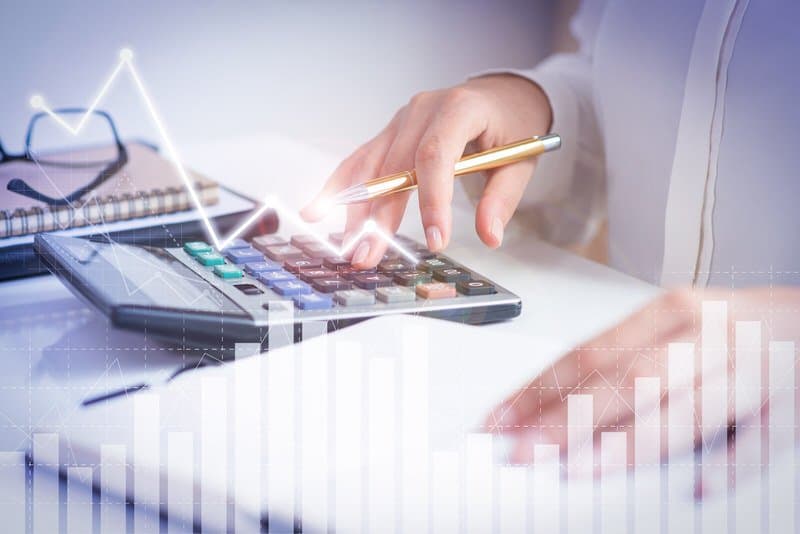Often, we wonder what’s the best investment out there, but frankly, not many of us dig deep or carry out any form of research to know where best to put our money. The reason for this is because most people are like me before I became wiser.
I would wait for when the money comes or hits my account before deciding where to invest some cash. This usually leads to quick and wrong decisions, nothing planned out. So I changed my strategy to learn and research before the money comes. That way, I can make an informed decision and treat investing as a system instead of a one-off thing.
Today, I’m bringing you information on investment bonds that many don’t pay close attention to, but could turn out to be a great investment growth opportunity. Let’s talk about the best emerging market bond funds!
What is an Emerging Market Bond Fund
This type of mutual fund or ETF invests most of its fund in securities and different asset classes like bonds, stock, and other securities from developing and emerging market economies. More than half of the fund is usually comprised of bonds, the other half consisting of stocks and other types of securities.
Emerging market bonds have been regarded as higher-risk since smaller nations are perceived as more likely to undergo sharp financial swings, political upheaval, and other disruptions not generally found in countries with more recognized financial markets.
Since investors will need to be paid for these additional risks, emerging nations have higher yields than more established countries. These funds invest heavily in assets from countries like Brazil, China, India, Russia, and others.
Best Emerging Market Bond Funds

Emerging market ETF allows investors to expand positions in emerging market bonds like a mutual fund, yet it exchanges like a stock. If the underlying bonds perform well, so does the ETF, less the funds’ cost and expenses.
We will be reviewing some of the best emerging market bond funds out there.
VanEck Emerging Markets Fund (EMRZX)
As a result of the global changes, we have seen massive growth in some industries such as e-commerce, telemedicine, digital payments, data centers, video gaming. Funds such as EMRZX stands to benefit from these growths.
Funds such as EMRZX are benefiting immensely because they are forward-looking and focused on several of these structural growth areas.
The managed fund managers use a bottom-up investment procedure driven by basic research to sustain an organization’s growth drivers and require a global perspective of emerging markets. China represents 43 percent of the portfolio resources. Top holdings comprise Alibaba Group Holding and HDFC Bank (HDB).
- Expense Ratio: 0.90%
- Total Assets: $23.2 billion
iShares JPMorgan USD Emerging Markets Bond ETF
It launched with the support of iShares in December 2007. iShares JPMorgan USD Emerging Markets Bond ETF (EMB) monitors the JPMorgan EMBI International Core Index. EMBI Global Core is a wide, U.S.-dollar denominated, emerging-markets debt benchmark. Virtually three-quarters of the EMBI Global Core is emerging government debt. A lot of the remainder is focused on high-yielding company bonds.
The asset will regularly contribute 90% of its resources at the component securities of the underlying index and up to 10% of its resources in futures, options, swap contracts, cash, and securities excluded from the underlying index.
The iShares JPMorgan USD Emerging Markets Bond ETF is ideal for investors searching for a diversified route to high-yielding income. The finance has holdings in 50 nations, such as in Russia, Mexico, Poland, Hungary, South Africa, and the Philippines.
- Expense Ratio: 0.39%
- Total Assets: $19.2 billion
Invesco Emerging Markets Sovereign Debt Portfolio
The Invesco Emerging Markets Sovereign Debt Portfolio (PCY) was founded in October 2007. This DBIQ Emerging Market USD Liquid Balanced Index seeks to follow the investment results before charges and costs.
The fund typically will invest in any event 80% of its complete resources in U.S. dollar-denominated government bonds from emerging economy countries, which include the underlying index. The underlying index list gauges potential returns of a hypothetical portfolio of liquid emerging market center U.S. dollar-designated government bonds.
The tracking function of the DB Emerging Markets USD Liquid Balanced Index is somewhat unique. All sovereign debt in the index is chosen through a proprietary index methodology and subsequently measured against a hypothetical portfolio’s potential returns. The entire portfolio is rebalanced quarterly. The PCY ETF has bond holdings in more than 20 countries, including Brazil, Croatia, Mexico, Lithuania, Colombia, Poland, and Slovenia.
The ETF expense ratio is only 0.50%. You can consider this fund if you want a highly diversified and actively rebalanced portfolio with exposure to emerging market fixed income returns.
- Expense Ratio: 0.50%
- Total Assets: $2.68 billion
Vanguard Emerging Markets Government Bond ETF
Vanguard Emerging Markets Government Bond ETF fund tries to follow a standard list’s presentation, which gauges the investment return of U.S. dollar-denominated securities issued by both government and government-related borrowers in emerging market countries.
The asset applies an indexing investment approach to follow the Bloomberg Barclays USD Emerging Markets Government RIC Capped Index. Each fund’s holding will be picked over the sampling technique and under normal conditions. In any event, 80% of the fund’s asset resources will be invested in bonds included in the index.
If you are looking for a non-diversified fund, this is a good one for you.
The VWOB ETF avoids any form of stock exchange rate currency volatility. The fund generally has debt holdings with longer maturities and, consequently, are more sensitive to fluctuations in interest rates. The VWOB has bond holdings in Russia, Mexico, Qatar, Colombia, and Argentina.
Like most Vanguard ETF offerings, the Emerging Markets Government Bond ETF has a very low expense ratio of just 0.25%. The VWOB is a great alternative for investors like you searching for passively controlled vulnerability to emerging government debt.
- Expense Ratio: 0.25%
- Total Assets: $2.1 billion
SPDR DoubleLine Emerg Mkts Fxd Inc ETF
SPDR DoubleLine Emerg Mkts Fxd Inc ETF fund looks to give a high total return on current income and capital appreciation. Under typical conditions, the asset will contribute 80% of its net resources (in addition to the borrowings for investment purposes) in emerging market fixed-income securities.
Fixed income securities are characterized as fixed income securities issued or guaranteed by foreign organizations or foreign governments; corporate or government securities. This includes sovereign debts, structured securities; foreign currency transactions; certain derivatives preferred protections, zero-coupon bonds; credit-linked notes; pass-through notes; bank loans; and perpetual maturity bonds.
- Expense Ratio: 0.75%
- Total Assets: $83.2 billion
Reasons for Choosing Emerging Market Bond Funds

Emerging market bonds have advanced from being a highly unpredictable resource class in the mid-1990s to an enormous, more matured fragment of today’s global financial market.
Developing countries have slowly improved due to political stability, the issuing nations’ economic strength, and government fiscal policies’ sufficiency. While a few developing countries still battle with budget deficits and high debts, many feature sound finances and more manageable debts.
Interestingly, developing countries as a collection enjoy a more robust economic growth rate than developed nations.
As a result, yields are lower than in previous years, while prices display more stability. Nonetheless, emerging market bonds are still vulnerable to external shocks that weaken the risk appetite among investors.
So, irrespective of the relative improvement in developing economies’ economic and political situations, this asset class remains volatile and high yield.
Portfolio Diversification in Emerging Markets

Emerging market bonds may offer diversification for all bond portfolios with more of a U.S.-centric focus. Emerging markets do not necessarily follow all the developed markets, meaning that these two groups’ bond markets may also provide different performance.
Note that the asset category is not inclined to reflect the operation of the world stock markets. Consequently, it can offer a measure of diversification to get somebody whose portfolio is tilted toward stocks, maybe not as much as you may anticipate.
Choosing Between Dollar-Denominated and Local Currency Debts
Investors can pick between mutual funds and trade exchanged assets (ETFs) that put resources into either dollar-denominated emerging market debts or debts issued in local currencies. For instance, in issuing debt, a nation, for example, Argentine, can sell bonds denominated either in dollars or the nation’s money – the Peso.
In general, dollar-denominated debts will be more steady, while local currency debt is commonly more unstable. Notwithstanding, local currency debt can, in the more extended term, give another approach to gain by the stable monetary development and improving the finances of emerging market nations.
The choice you pick relies upon your capacity to bear the risk attached.
Mixed Investment Choices

Investors are not confined to only government bonds in the emerging markets. Businesses in developing nations also issue debt, and this asset category is quickly increasing in popularity.
While most emerging market funds set a part of their corporate bonds assets, traders may also get the asset category right through ETFs like WisdomTree Emerging Markets Corporate Bond Fund (EMCB).
Conclusion
When choosing the best emerging market bond fund, you need to know that emerging market funds spend most of their funds on securities from countries with growing economies.
These assets are mutual funds or ETFs that put resources into emerging market debt or equity to build enhanced asset investors. Emerging market funds provide a range of alternatives throughout the threat spectrum and are usually appealing investments for growth investors.
Is this something you want to try out?
If you already have an investment in the Emerging Market Bond Fund, kindly share your experience with the rest of us.


